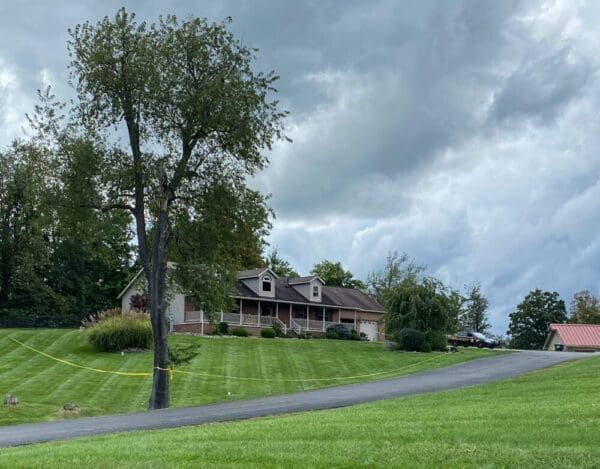One by one, the decrepit is demolished.
Parcel by parcel, the ruins of rickety ramshacks are removed and hauled away.
Finally.
And, while the demolitions leave only vacant lots, Wheeling Councilman Ben Seidler views each razing as an opportunity for new life for the particular parcel, and for the city as a whole.
“We’ll never know if someone wants to build a new house on a piece of property until the property is clear, right? So, that is something to look forward to, I believe,” Seidler said. “Plus, one of the most important goals we have is to make sure the city never gets back into this situation again because to have 120 properties that need to be demolished at once is pretty ridiculous by anyone’s standards.
“There are some people who have been amazed that we have that many structures that need to come down, but that’s where we are and we are going to take care of it,” he said. “But, to avoid it in the future, some standards have to be put into place so there are measuring sticks to following in the future.”
The primary reason why so many dilapidated residential and commercial buildings needed to be razed is because of the pace of population loss that took place in Wheeling between 1980 and 2010. During those 30 years alone, the city went from 43,000 residents to 28.5.
“Right now, the goal is to do what we have to do to get rid of the blight in our neighborhoods, and while the majority of the houses are on Wheeling Island and in Center and South Wheeling, there are also some in all of the other wards, too,” Seidler reported. “Sure, something should have been done years ago about this problem, but nothing was and now we have to do it, and the good news is that we can. We have those resources, and we now have the tools to stay ahead of this issue in the future.”

Soon Forgotten
Thousands once were employed in the former factory building along 19th Street in East Wheeling, but because its most recent owner did nothing to improve it, the structure was leveled, and the bricks were cleared away.
And families used to live in those Wheeling Island and Center Wheeling houses until excavators yanked them down into piles of anonymous debris that eventually were hauled to the Short Creek Landfill.
“That is the reality,” Seidler said. “That’s why I know for a lot of people in town, this will be a sad process because there are a lot of people who have lived in these homes during their lifetimes. They have memories inside and outside those properties, and now a demolition has to happen because the structure hasn’t been taken care of for an extended person of time.
“But once these properties are cleared, the other property owners in those areas will realize the benefits and getting rid of a public safety nuisance is just one thing to consider.”
If someone wishes to construct a new home on Wheeling Island, it is most likely the structure will need to be stilted to meet federal flood plain mandates. A popular practice in this area of Ward 2, however, involves an adjacent property owner purchasing the cleared lot from the city following a demolition to utilize as a side yard or parking area.
“And, once blight in a neighborhood is removed, property values go up, and so does the number of new residents because the area becomes more attractive overall,” the council member explained. “Once all of this work is completed, it will be an important turning point for our city and I’m looking forward to see what happens in the future.”

Doubling Down
The City of Wheeling allocated $500,000 for demolitions in 2021.
It wasn’t enough.
But a million? According to Seidler, $1 million will fund the razings of the 120 structures, all of which are on his “worst of the worst” list.
“I am excited because we came together as a council to approve a $1 million budget for demolitions because the work really, really needs to happen here in the city of Wheeling,” Seidler said. “There are 120 properties that have been identified and the majority of them are in Ward 2 and Ward 3, and those wards cover large areas of the city so to have the other council members support us means a lot.
“It’s a lot of money and it’s a lot of money, but it means so much to the people of our two wards and that’s why we really appreciate their support,” he said. “Our legal department has been hard at work trying to notify all of the owners of these properties, and that can be a challenge sometimes for various reasons. There are some cases where we cannot locate the owners so those situations have to be handled in different ways.”
Although Seidler’s campaign included a promised crackdown on property code enforcement, some of his ward’s residents have voiced concerns over his efforts to clear blighted properties and push for code enforcement.
“I have heard that some people think I want to make Ward 2 something like Beverly Hills and that I am going to report every blade of grass that’s high or every chip of paint that’s off a house,” Seidler said with a chuckle. “That is not what this is about. What this is about is bringing properties up to code. That’s it, and that code doesn’t cover pretty or ugly. I don’t care about that.
“My ward has some of the most beautiful houses in the city and I’d love to see them appear that way, but that’s up to the owners,” he added. “This initiative, though, is about taking away the blight by tearing down the houses that have missing windows or caving-in roofs. We’re talking about the structures that have become public safety concerns because whoever owns them has chosen to forget about them.”




